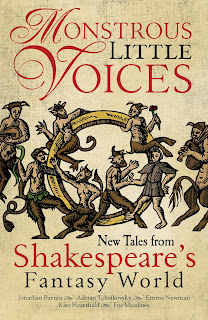Star Trek Voyager: The Farther Shore by Christie Golden is the direct sequel to
Homecoming, and together the two books form a duology. They are more like one longer book that was split in two, however, and neither of them stand alone. This review contains spoilers for
Homecoming, and probably some for
The Farther Shore, too, but I will put those under a spoiler shield thingy unless they are very minor.
When the long-lost Starship Voyager returned home to Earth, did Kathryn Janeway and her crew unwittingly bring with them a deadly Borg infection from the heart of the Delta Quadrant? Many in Starfleet think so, and Seven of Nine finds herself the prime suspect as the carrier of the plague. Now, following the events of Homecoming, Admiral Janeway must reunite her crew in a desperate attempt to discover the source of the contagion -- and save the people of Earth from total assimilation into a voracious Borg collective.
This book made me pretty angry. There were two main elements which led to this. First, the prologue and a bunch of out-take type scenes in
Homecoming featured extensive violent and sexual child abuse over many years of the victim's life. I had no idea where those scenes were going in the first book, so I largely filed them away in the "will probably be relevant later" draw. In
The Farther Shore their purpose was revealed: the child abuse existed to motive the villain being a villain. There are so many things wrong with this, I don't even know where to start. Let's start with the obvious that most victims of domestic violence don't go on to pursue world domination. Also, while domestic violence is endemic in our society, it really seems like the sort of thing the Star Trek future should have largely dealt with and mostly eliminated. Certainly, I find it implausible that it continued for her entire childhood without the future having given her mother the tools to get herself and the child out of the situation. But more importantly, the whole being repeatedly raped as a child making someone a villain and turning into a literal monster is a very damaging trope. I was very annoyed to find it a pivotal plot element.
The other thing that really annoyed me was a bit of a spoiler, so it is under a spoiler shield.
There was scene where revolting holograms kidnap a bunch of people, choosing mainly based on convenience regarding where they worked. Then, to emphasise how much holograms have been treated as slaves (a point, I might add, that is explored much better in the actual series), the people are beaten and threatened with rape. We see things from the point of view of a male security guard and he surmises that, since the holograms have apparently gone mad and started whipping him, a woman that got carried off by angry holograms might get raped. To be fair, we only see things from this one guard's point of view and by the end it seems likely that she probably wasn't raped (or possibly wasn't real) but it was such an extreme and misplaced way of punishing a few randomly chosen humans for the apparent crime of conforming to society's view on holograms that it pissed me off. Rape as punishment is never OK. Even less so in this context. So that pissed me off.
Overall, there were minimal redeeming plot qualities but the rest of the book wasn't terrible. The hologram revolt sort of fizzled out and the Borg threat was, predictably, stopped by our main characters. The characterisation was all right, but the characters weren't exactly put in optimal situations. Even the well-meaning but mislead character who kept standing in their way had an unsatisfactory about-turn. Libby, a new character who I liked in the first book, still played a pivotal role but did not get enough page time in the resolution. B'Ellana's story line was completely separate from the main elements of the plot. Although it wasn't bad, it really could have been removed without ruining anything. The only relevant part was that she was off elsewhere while Tom was with the other main characters. I assume it's purpose was to set up some future book, but, well, meh.
I have been a bit harsh, though. The first part of
The Farther Shore wasn't too bad. Aside from the specific things I singled out above, only the ending was a bit disappointing. On the other hand, from about half-way through my desire to get through it so I could write an angry review, which I have now done, started to outweigh my desire to find out what happened next. The latter, however, is why I didn't just put it down. (Also because it's not that long.)
I don't particularly recommend this book to anyone. Which is unfortunate, because the previous book wasn't bad, but definitely doesn't stand alone. Part of me wants to know more of what happens to these characters, but I think it will be a while before I pick up another Voyager book, alas. (But my TBR rejoices at not having the competition.)
2.5 / 5 stars
First published: 2003, Pocket Books
Series: Star Trek Voyager licensed fiction, book 2 of 2 in the Homecoming duology
Format read: ePub
Source: Purchased from Google Play

























